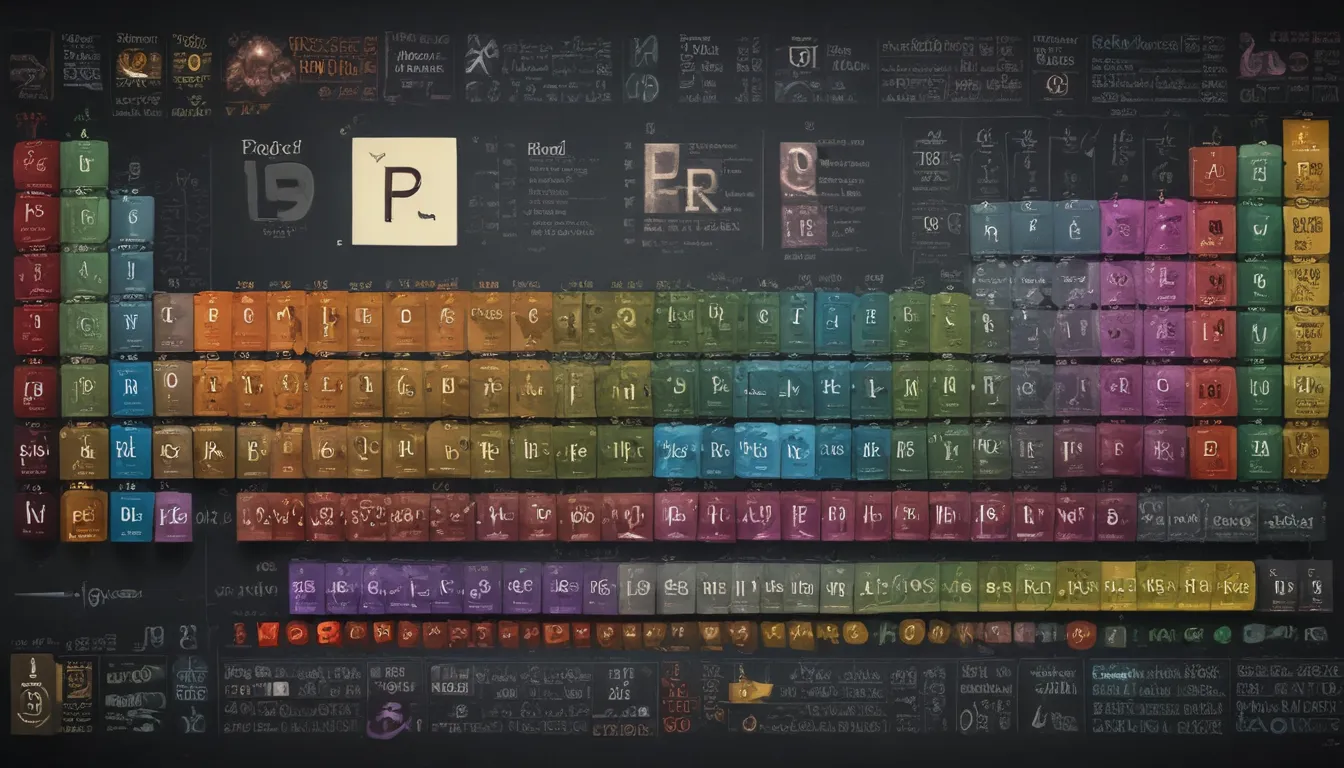A Note About Images: The images used in our articles are for illustration purposes only and may not exactly match the content. They are meant to engage readers, but the text should be relied upon for accurate information.
The periodic table is more than just a chart of elements; it is a testament to the incredible diversity and complexity of the natural world. Each element has its own unique properties and significance, contributing to the vast tapestry of chemistry and the universe as a whole. In this article, we will delve into the fascinating facts and stories behind the periodic table, gaining a deeper appreciation for the building blocks of matter and the scientific achievements that have shaped our understanding of the world around us. Whether you are a science enthusiast, a student, or simply curious about the world, the periodic table holds countless secrets waiting to be explored.
The Historical Significance of the Periodic Table
The periodic table was first created by Dmitri Mendeleev in 1869, a Russian chemist credited with developing the first widely recognized periodic table. His innovative arrangement of elements based on their properties and atomic weights laid the foundation for the modern periodic table. Elements in the periodic table are organized into groups and periods, allowing for the classification of elements with similar characteristics and behaviors. Today, there are 118 known elements in the periodic table, each contributing to the rich tapestry of chemical diversity.
The Structure and Organization of the Periodic Table
The periodic table is a visual representation of the building blocks of the universe, showcasing the elements and their unique attributes. The arrangement of elements in the periodic table reflects their atomic structure, highlighting recurring patterns in atomic configurations and bonding behaviors. Chemists and researchers utilize the periodic table as a powerful predictive tool, forecasting the properties and behaviors of undiscovered elements. Elements in the periodic table are categorized as metals, nonmetals, and metalloids, each with distinct characteristics and applications across various scientific and industrial fields.
The Evolution and Adaptation of the Periodic Table
The periodic table has undergone significant evolution since its inception, with the discovery of new elements and advancements in scientific understanding leading to refinements in its organization. In addition to naturally occurring elements, the periodic table accommodates synthetic elements created through laboratory processes, expanding our knowledge of atomic structure and potential applications. By showcasing elements with similar properties in close proximity, the periodic table aids in elucidating the principles of chemical bonding and compounding, enriching our understanding of chemical interactions.
The Diversity and Unity of Elements in the Periodic Table
The periodic table highlights the prevalence of certain elements in Earth’s crust, emphasizing the elemental composition of our planet. From inert noble gases to highly reactive alkali metals, the periodic table showcases the vast array of elements contributing to the complexity and richness of the natural world. By elucidating the properties and behaviors of elements, the periodic table serves as a foundation for understanding chemical reactions and transformations of matter, serving as a cornerstone of chemistry knowledge and understanding.
The Impact and Inspiration of the Periodic Table
Beyond its scientific significance, the periodic table has inspired artistic and cultural interpretations, serving as a muse for creative works celebrating the beauty and order of element arrangement. With its enduring relevance and contributions to scientific endeavors, the periodic table continues to captivate and intrigue scientists and enthusiasts alike. Its comprehensive depiction of elements and their properties fosters interdisciplinary connections, bridging the realms of chemistry, physics, and materials science to drive innovations and discoveries.
The Enduring Legacy of the Periodic Table
The periodic table embodies the essence of scientific discovery and enlightenment, encapsulating the spirit of scientific inquiry and the wonders of the universe. As a timeless symbol of humanity’s quest to unravel the mysteries of the natural world, the periodic table continues to inspire wonder and curiosity, fueling the passion of those seeking to uncover the secrets of the elements and their profound significance in the universe. With its captivating portrayal of the elements and their properties, the periodic table stands as a testament to the enduring legacy of scientific exploration and discovery.
Conclusion
In conclusion, the periodic table is not just a chart of elements; it is a testament to the incredible diversity and complexity of the natural world. Each element has its own unique properties and significance, contributing to the vast tapestry of chemistry and the universe as a whole. By delving into the fascinating facts and stories behind the periodic table, we gain a deeper appreciation for the building blocks of matter and the scientific achievements that have shaped our understanding of the world around us.
FAQs
What is the significance of the periodic table?
The periodic table is a fundamental tool in chemistry, organizing elements based on their atomic structure and properties. It provides a systematic way to understand the behavior and relationships of elements, laying the groundwork for countless scientific discoveries and technological advancements.
How many elements are there in the periodic table?
Currently, there are 118 confirmed elements in the periodic table, with each one playing a unique role in the composition of matter and the functioning of the natural world.






